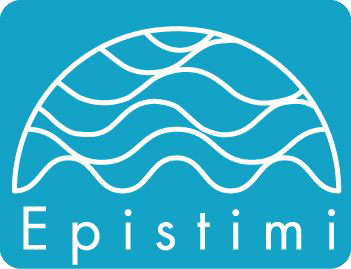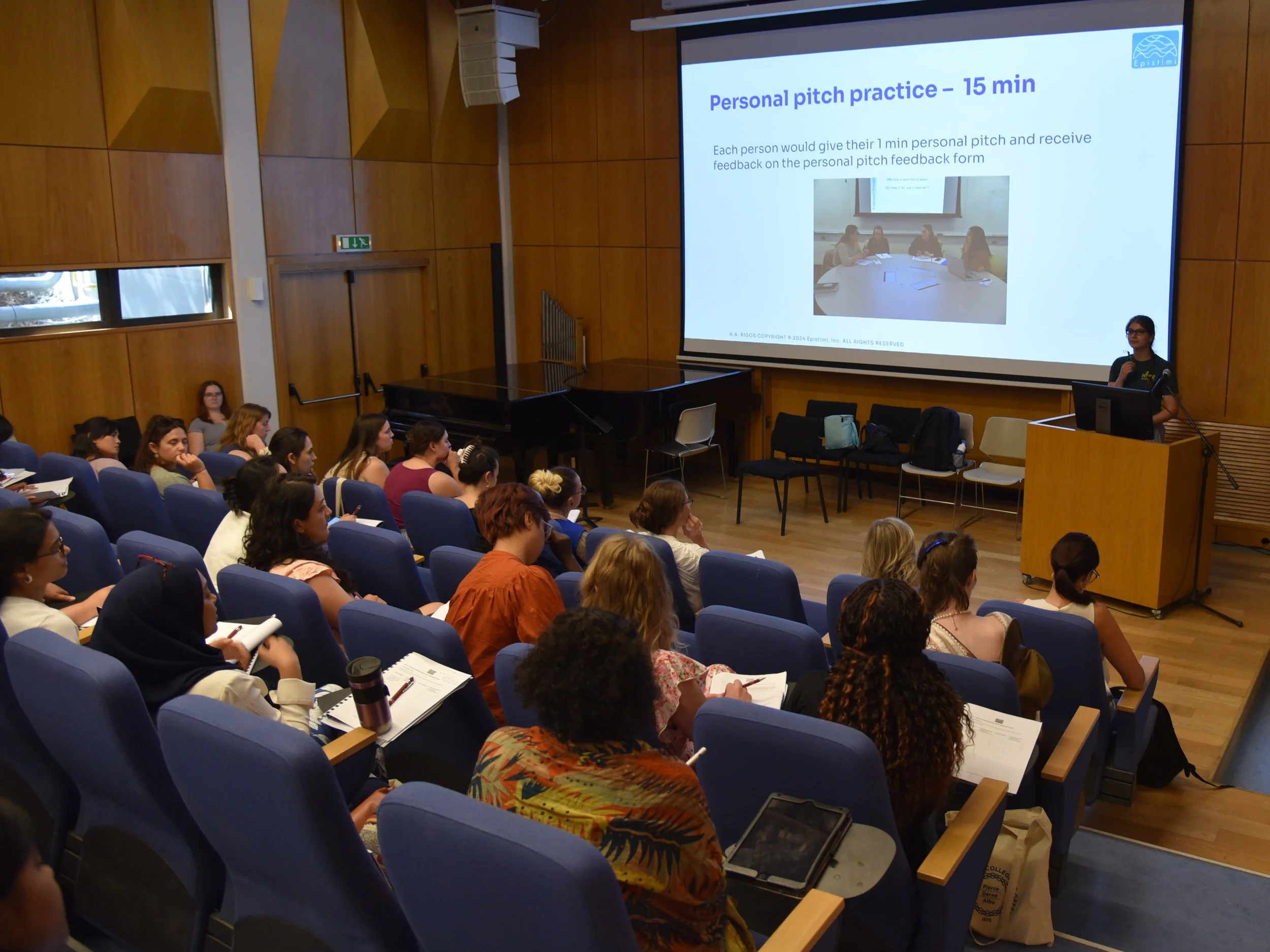Understanding leadership development leads to better programs for women
Source: Angeliki Diane Rigos
Understanding the dynamics by which leadership emerges, including the relationships within groups, can help us design and choose the leadership training program that best serves our needs.
By Angeliki Diane Rigos
13 May 2025, DOI: 10.5281/zenodo.15123747
There are many famous women leaders who attended all women colleges. The US secretaries of state Hilary Clinton and Madeleine Albright both attended Wellesley College as did the astronomer Annie Jump Cannon. The famous feminist Gloria Steinem attended Smith College and the geneticist Nettie Maria Stevens attended Bryn Mawr College. The prime ministers Margaret Thatcher (UK) and Indira Gandhi (India) attended Somerville College in Oxford as did the crystallographer Dorothy Hodgkin.
According to a recent article, more than 20% of women in the US Congress and 30% of a Businessweek list of rising women in corporate America are graduates of women's colleges even though only 2% of American women attend these colleges [1]. These women are also almost twice as likely to complete a graduate degree as a public university alumna [2]. This success rate is due to the uniquely supportive environment of these institutions that makes it possible for female students to thrive academically, grow their self-confidence and develop leadership skills.
I had benefited from an early version of this type of safe and supportive educational environment found in all-girls schools both in elementary school (Grades 1 and 2) and at the Greek-American gymnasium Pierce College (Grades 7-12). It was women from Wellesley College who founded Pierce College in 1875 in Smyrna, Turkey (it was relocated to Athens, Greece, in 1923 after the horrific fire in Smyrna). In retrospect, I see how critical those 6 years were, first to my development and later to my survival as a woman scientist.
However, I had forgotten what it felt like to be in such a supportive space until I attended a HERS leadership institute in 2015. HERS (Higher Education Resource Services) was founded in 1972 as a “leadership development organization dedicated to creating and sustaining a dynamic network of women and gender-diverse leaders in higher education” [3]. I must be honest here and confess that I did not choose the HERS program because of its focus on senior women in academia; rather, I chose it because it took place in Denver and I had never been to Colorado.
At the end of the program, I realized that I had needed this leadership training many years ago when I graduated with a Ph.D. in chemistry from MIT. I asked the President of HERS to offer this type of training to graduate students and postdoctoral fellows in STEMM. Her response: “That is not our mission. Why don’t you do it?” So that is how I got started on this path that eventually led to founding Epistimi.
I knew in my gut that other women in STEMM would greatly benefit from leadership training. What I did not know then was that three female professors had studied how to take gender into account in designing women’s leadership development programs. Robyn Ely (Harvard), Herminia Ibarra (INSEAD) and Deborah Kolb (Simmons College) wrote a paper in 2011 that offers a theoretical rationale for teaching leadership in women-only groups [4].
Leadership identity construction
The concept of leadership identity construction forms the basis of their theories. Identity is a person’s sense of self as defined by characteristics, affiliations and social roles, not shared with others; identity includes a sense of continuity derived from our sensations, our body image and our personal memories, goals, values, expectations, and beliefs. In 2010, D. Scott DeRue and Susan Ashford from the University of Michigan presented an identity-based social process of how people claim and grant leader and follower identities [5]. They use the definition of Sveningsson for identity work: “people being engaged in forming, repairing, maintaining, strengthening or revising” their identity [6].
In psychoanalytical terms, a person can project a leader image and, if others mirror it back and reinforce it, then they will be perceived as a leader. An individual has to claim and internalize the leader identity. Furthermore, the organizational structure influences this process since, in some groups, there is a hierarchical structure with only one leader and, in other groups, there is a shared leadership structure with multiple leaders.
DeRue and Ashford [5] maintain that there must be high quality visibility, clarity and credibility to the claiming and granting of leadership identity to sustain the reciprocal nature of this construction process. Furthermore, they emphasize that prior behavior influences future behavior both consciously and unconsciously:
“If a person has claimed a leader identity in the past and been granted that identity by others, it is likely this person will claim a leader identity again in the future. In fact, as the history of claims and grants between people develops over time, we expect the reinforcing nature of these claims and grants to become more habituated and mindless.”
This statement helped me appreciate the benefits of the all-girls school that I had attended: If 100% of the school is girls, then the leaders will always be girls. This situation is permanently imprinted in our psychosocial development, whether we our aware of it or not.
The big general question is: when will people claim leader identities?
Individuals must be motivated and incentivized in order to take that step. Either consciously or unconsciously, they must have an image of what a leader looks like and think that they fit the description. They must see more benefits than risks with the role. They must believe that others see them as a leader and not be worried about how the act of claiming the leadership role is perceived by others. They must be brave enough to handle the failures of the group as well as the successes if they are leading the group.
Clearly, it is easier to claim a leader identity if one holds a formal position of authority.
Taking gender into account when designing women’s leadership programs
In addition to internalizing a leadership identity, Ely et al. [4] add a critical interrelated task to leadership development, developing an elevated sense of purpose:
“An elevated sense of purpose challenges leaders to move outside of their comfort zones, shifts their attention from what is to what is possible, and gives them a compelling reason to face down their fears and insecurities and take action despite them.”
There are many impediments to women’s leader identity development which result in women not progressing as quickly as men in this process:
· In most cultures, the prototypical leader is assumed to be a man with specific qualities such as decisive, assertive and independent while women are seen to be friendly, unselfish and caring. Society’s bias about what leaders look like makes it almost impossible for women to be true to themselves and also fit the “prototypical” leader model society expects: women leaders are perceived as “exceptions”
· Since there are so few role models for women, they have fewer opportunities to observe and evaluate experiments with provisional identities; furthermore, the few women leader identity claims they are exposed to may not match or be attractive to their self-concepts of who they want to become. It is like going shopping for pants and finding that there are only three designs, none of them being a good fit for you.
· The path to leadership through global assignments, formal rotations within organizations and an evaluation system created by men makes it more difficult for women to be seen as having the traditional organizational requirements for advancement
· Since there are so few women in higher leadership positions, they, as “exceptions”, are more visible and subject to excessive scrutiny. This can result in women wasting energy and time on how they are perceived; they figure out how to adjust their image or become discouraged because of negative feedback.
· The composition and extent of women’s informal networks does not provide the same access to influential colleagues available to men. These more limited networks impact careers by providing less access to jobs, information, referrals, support, feedback, advice and sponsorship. McGuire found that “network members were less likely to invest in women than in white men because of cultural beliefs that rank women below that of white men” [7].
All these challenges specific to women require effective leadership programs for women to include a somewhat different approach than traditional leadership programs. Ely et al. [4] include the following core topics in their women-only programs: 1) 360-degree feedback 2) leadership networking 3) everyday negotiations 4) leading change and 5) career transitions. They also draw on their collective experience in teaching women’s leadership to recommend three design principles for a successful program:
1. The need for discussions addressing how second-generation gender bias (defined as “invisible barriers to women’s advancement that arise from cultural beliefs about gender, as well as workplace structures, practices, and patterns of interaction that inadvertently favor men”) influences career experiences in organizations
2. The creation of a ‘safe space’ to support women’s identity work – the other women in the workshop can offer feedback and their shared experiences, emotionally supporting the personal development of each participant in the absence of negatively biased scrutiny
3. Opportunities for participants to strengthen their commitment to their specific leadership purpose/project. It is about making conscious the challenge that drives them to make a difference in the world. Whether they are interested in reducing carbon emissions, finding a cure for a specific disease or saving a species from extinction, the participants need to be connected to their core values and be true to their greater personal purpose.
Conclusions
In conclusion, Ely et al. [4] support leadership development in a variety of formats including mixed gender programs but they emphasize the advantages of a woman participating at least once in a women-only program:
· The novelty of being in a women-only ecosystem for a short time can help illuminate some of the challenges in the mixed-gender workplace and lead to significant insights
· The development of a strong peer network that lasts beyond the workshop interactions will help participants initiate change in their ecosystem
I have experienced these benefits from my participation in the HERS leadership institute and I have observed participants in Epistimi’s workshops benefit in the same ways. What we hope to achieve is more than just teaching women the rules of the game as established by men; we hope to empower women to change the rules so that they benefit everyone.
Questions for further thought
· Have you observed differences in leadership identity construction between men and women?
· Have you reflected on your leadership identity construction and how it was facilitated?
· How could you support the leadership identity construction of younger colleagues?
References
[2] https://www.womenscolleges.org/
[3] https://hersnetwork.org/who-we-are/mission-and-values/
[4] Ely, R.J., H. Ibarra and D.M. Kolb, Taking Gender Into Account: Theory and Design for Women’s Leadership Development Programs, Academy of Management Learning and Education, Vol 10, No. 3, 474-493 (2011)
[5] DeRue, D.S. and S.J. Ashford, Who Will Lead and Who Will Follow? A Social Process of Leadership Identity Construction in Organizations, Ashford, Academy of Management Learning and Education, Vol 35, No. 4, 627-647 (2010)
[6] Sveniningsson, S.F. and M. Alvesson, Managing Managerial Identities: Organizational Fragmentation, Discourse and Identity Struggle, Human Relations, 56, 1163-1193 (2003)
[7] McGuire, G., Gender, Race, and the Shadow Structure: a Study of Informal Networks and Inequality in a Work Organization, Gender and Society, 16, 303-322 (2002).

